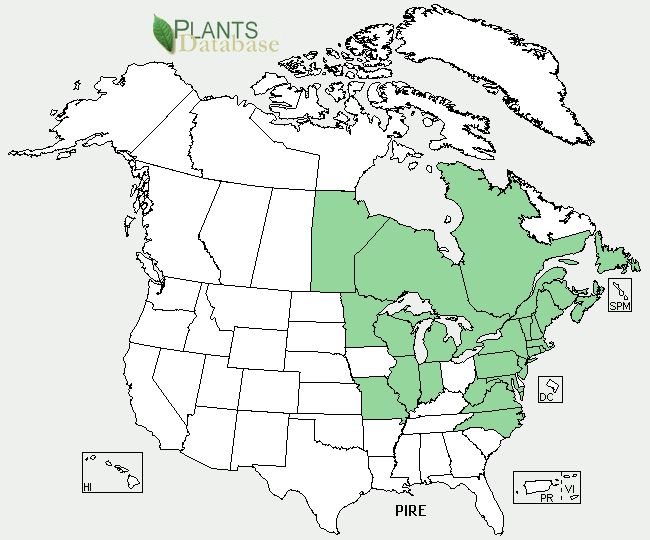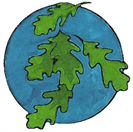
Sources:
Trees of North America- A guide to field identification-a Golden Field Guide from St. Martin's Press © 2002 By C. Frank Brockman p.26
The Encyclopedia of North American Trees by Sam Benvie. Firefly Books Ltd.,2000 Buffalo, NY © 2000 Sam Benvie p.179
Diseases of Trees and Shrubs, 2nd edition, by Wayne A. Sinclair and Howard H. Lyon, © 2005 Cornell University, Cornell University Press, p. 332
USDA, NRCS. 2011. The PLANTS Database (<http://plants.usda.gov/>, 22 August 2011). National Plant Data Team, Greensboro, NC 27401-4901
Plant Fact Sheet, Published June, 2002. USDA NRCS National Plant Data Center. Prepared by: Lincoln M. Moore, USDA NRCS National Plant Data Center, Baton Rouge, Louisiana. Species Coordinator: M. Kat Anderson, USDA NRCS National Plant Data Center c/o Environmental Horitculture Department, Davis, Califonia
Hauser, A. Scott. 2008. Pinus resinosa. In: Fire Effects Information System, [Online]. U.S. Department of Agriculture, Forest Service, Rocky Mountain Research Station, Fire Sciences Laboratory (Producer). Available: http://www.fs.fed.us/database/feis/ [2011, August 22].
Trees of North America- A guide to field identification-a Golden Field Guide from St. Martin's Press © 2002 By C. Frank Brockman p.26
The Encyclopedia of North American Trees by Sam Benvie. Firefly Books Ltd.,2000 Buffalo, NY © 2000 Sam Benvie p.179
Diseases of Trees and Shrubs, 2nd edition, by Wayne A. Sinclair and Howard H. Lyon, © 2005 Cornell University, Cornell University Press, p. 332
USDA, NRCS. 2011. The PLANTS Database (<http://plants.usda.gov/>, 22 August 2011). National Plant Data Team, Greensboro, NC 27401-4901
Plant Fact Sheet, Published June, 2002. USDA NRCS National Plant Data Center. Prepared by: Lincoln M. Moore, USDA NRCS National Plant Data Center, Baton Rouge, Louisiana. Species Coordinator: M. Kat Anderson, USDA NRCS National Plant Data Center c/o Environmental Horitculture Department, Davis, Califonia
Hauser, A. Scott. 2008. Pinus resinosa. In: Fire Effects Information System, [Online]. U.S. Department of Agriculture, Forest Service, Rocky Mountain Research Station, Fire Sciences Laboratory (Producer). Available: http://www.fs.fed.us/database/feis/ [2011, August 22].
Map courtesy USDA NRCS PLANTS Database
on the outer surface of the thick bark, that flake off. Needles of Red pines, are stiff, inflexible to the point of being brittle, and dark green. They persist on trees for 3 years but may live as long as 6 before falling. In bundles of 2, the 4 to 6 inch long needles are also slender, sharp tipped, and can be straight to twisted. Male and female cones are found in different parts of the tree and on separate branches. Female pine cones are produced in the upper portion of the crown, while the males are found in the lower crown limbs. Male cones are deep red to almost pink, are short lived and very small. At the base of the current year's growth, male cones quickly start growing in the summer and are gone by early fall. Female Red pine cones are conical to ovoid, 1 to 2.5 inches long, and are without prickles on their scales. Like the bark, mature cones are a warm, reddish brown and are somewhat glossy when juvenile. Remarkably, the purplish-brown seeds will stay viable in storage for 30 years if kept cool (30-40°F) and dry. Root systems consist of wide spreading lateral roots just under the surface with deep vertical sinkers as far down as 20 feet. Red pine sometimes has a tap root as well, but it's rarely longer than 10 feet.
Habitat
Pinus resinosa prefers medium and coarse textured soils with a pH between 5.1 and 5.5. Best growth is attained where the water table is 4 to 9 feet beneath the surface, on sand or sandy loams that are well aerated and with good moisture retaining properties. Gently
Pests, Diseases and Elemental
There are over 200 insect pests associated with Pinus resinosa. Most commonly found are the Red pine cone beetle, Red pine cone moth, red pine cone worm, Pine root collar weevil, Pine shoot beetle, European pine shoot moth, Jack pine budworm, and White pine weevil. Red pine is susceptible to Heterobasidion annosum, a root disease which causes root and butt rot. This disease has caused between 20% and 100% mortality in tree plantations at times and is a serious threat. Red pines are sensitive to both high heat and high levels of air pollution. Saplings, in particular, suffer heat stress. Additionally, while useful for windbreaks, Red pines are prone to wind damage, especially when drought stressed.
Uses
Because the wood is hard and straight grained and the trunks are usually straight and branch free, Red pine is a commercially valuable timber tree and is widely used for a variety of products. Pulpwood, posts, pilings, railroad ties, veneer, and even cabin logs are just some of the things this tree is used for. At one time, it was even used as a Christmas tree and the foliage was harvested for home decorations. For landscaping purposes, Red pine is better suited to larger areas, like parks and recreational spaces. It makes an excellent evergreen windbreak or snowbreak and is used for watershed protection and management. Occasionally, the bark is used for tanning leather. Historical uses by Native Americans and settlers included a poultice, made of pounded inner bark, for treating wounds and sores. Also, like all pines, Red pine resin contains turpentine, which can be distilled. Turpentine has been used to treatment many ailments. Respiratory complaints like coughing, bronchitis, common colds, and influenza were eased by steam baths and inhalers. In the late 1800's, it was even used to treat tuberculosis.
Propagation
Red pine seeds require cold stratification to germinate. Oddly enough, they also are dependant on fire. More so than most native trees, this species is heavily reliant on fire for regeneration. Fire does three things crucial to successful propagation in one swoop. The first is that it prepares the seedbeds by burning away all the built up humus. Second, it kills all the surrounding competition and third, it drastically reduces cone and seed predation by reducing the number of insects. This goes hand in hand with Red pines natural defenses against fire.
Habitat
Pinus resinosa prefers medium and coarse textured soils with a pH between 5.1 and 5.5. Best growth is attained where the water table is 4 to 9 feet beneath the surface, on sand or sandy loams that are well aerated and with good moisture retaining properties. Gently
Pests, Diseases and Elemental
There are over 200 insect pests associated with Pinus resinosa. Most commonly found are the Red pine cone beetle, Red pine cone moth, red pine cone worm, Pine root collar weevil, Pine shoot beetle, European pine shoot moth, Jack pine budworm, and White pine weevil. Red pine is susceptible to Heterobasidion annosum, a root disease which causes root and butt rot. This disease has caused between 20% and 100% mortality in tree plantations at times and is a serious threat. Red pines are sensitive to both high heat and high levels of air pollution. Saplings, in particular, suffer heat stress. Additionally, while useful for windbreaks, Red pines are prone to wind damage, especially when drought stressed.
Uses
Because the wood is hard and straight grained and the trunks are usually straight and branch free, Red pine is a commercially valuable timber tree and is widely used for a variety of products. Pulpwood, posts, pilings, railroad ties, veneer, and even cabin logs are just some of the things this tree is used for. At one time, it was even used as a Christmas tree and the foliage was harvested for home decorations. For landscaping purposes, Red pine is better suited to larger areas, like parks and recreational spaces. It makes an excellent evergreen windbreak or snowbreak and is used for watershed protection and management. Occasionally, the bark is used for tanning leather. Historical uses by Native Americans and settlers included a poultice, made of pounded inner bark, for treating wounds and sores. Also, like all pines, Red pine resin contains turpentine, which can be distilled. Turpentine has been used to treatment many ailments. Respiratory complaints like coughing, bronchitis, common colds, and influenza were eased by steam baths and inhalers. In the late 1800's, it was even used to treat tuberculosis.
Propagation
Red pine seeds require cold stratification to germinate. Oddly enough, they also are dependant on fire. More so than most native trees, this species is heavily reliant on fire for regeneration. Fire does three things crucial to successful propagation in one swoop. The first is that it prepares the seedbeds by burning away all the built up humus. Second, it kills all the surrounding competition and third, it drastically reduces cone and seed predation by reducing the number of insects. This goes hand in hand with Red pines natural defenses against fire.
Red Pine,
Pinus resinosa Aiton
Pinus resinosa Aiton
Common names: Norway Pine, Northern Pine, Eastern Red Pine, Pin Rouge
Synonym: Pinus resinosa Soland.
State List: CT, IL, IN, MA, MD, ME, MI, MN, MO, NC, NH, NJ, NY, PA, RI, VA, VT, WI, WV
Canada: MB, NB, NF, NS, ON, PE, QC
Visit the Image Gallery for more photos
View all North American native pine trees.
Synonym: Pinus resinosa Soland.
State List: CT, IL, IN, MA, MD, ME, MI, MN, MO, NC, NH, NJ, NY, PA, RI, VA, VT, WI, WV
Canada: MB, NB, NF, NS, ON, PE, QC
Visit the Image Gallery for more photos
View all North American native pine trees.

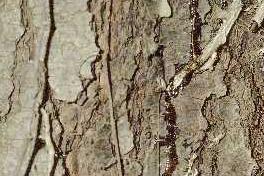
Red pine is one of the most fire resistant native tree species, ranking 3rd behind Pitch Pine and Chestnut Oak



Monday, May 05, 2025

™
|
|
|
|
|
| A-Z scientific | ||
| A-Z by Common Name | ||
| Families | ||
| Browse by State | ||
| Rare or Endangered Species | ||
| Trees_with_Special_Uses | ||
| Tallest and Biggest |
| Aceraceae Maple Family | ||
| Anacardiaceae Sumac Family | ||
| Annonaceae Custard Apple Family | ||
| Aquifoliaceae Holly Family | ||
| Arecaceae, Palm Family | ||
| Betulaceae Birch family | ||
| Bignoniaceae Trumpet Creeper Family | ||
| Burseraceae Frankincense Family | ||
| Caprifoliaceae Honeysuckle Family | ||
| Chrysobalanaceae Coco-plum Family | ||
| Cornaceae Dogwood Family | ||
| Cupressaceae Cypress Family | ||
| Cyrillaceae Cyrilla Family | ||
| Ebenaceae Ebony Family | ||
| Ericaceae Heath Family | ||
| Fabaceae Pea Family | ||
| Fagaceae Beech Family | ||
| Hamamelidaceae Witch Hazel Ffamily | ||
| Hippocastanaceae Horse Chestnut Family | ||
| Juglandaceae Walnut Family | ||
| Lauraceae Laurel Family | ||
| Leitneriaceae Corkwood Family | ||
| Magnoliaceae Magnolia Family | ||
| Meliaceae Mahogany Family | ||
| Moraceae Mulberry Family | ||
| Myricaceae Bayberry Family | ||
| Myrsinaceae Myrsine Family | ||
| Myrtaceae Myrtle Family | ||
| Nyctaginaceae Four Oclock Family | ||
| Olacaceae Olax Family | ||
| Oleaceae Olive Family | ||
| Pinaceae Pine Family | ||
| Platanaceae Plane Tree Family | ||
| Polygonaceae Buckwheat Family | ||
| Rhamnaceae Buckthorn Family | ||
| Rosaceae Rose Family | ||
| Rubiaceae Madder Family | ||
| Rutaceae Rue Family | ||
| Salicaceae Willow Family | ||
| Sapindaceae Soapberry Family | ||
| Sapotaceae Sapodilla Family | ||
| Simaroubaceae Quassia Family | ||
| Styracaceae Storax Family | ||
| Symplocaceae Sweetleaf Family | ||
| Theaceae Tea Family | ||
| Tiliaceae Lindon Family | ||
| Ulmaceae Elm Family | ||
| Taxaceae Yew Family | ||
| Yucca Family |
| Maple A-Z |
| sumac_family_a-z |
| custard_apple_family_a-z |
| holly_trees_a-z |
| palm_family_a-z |
| birch_family_a-z |
| trumpet_creeper_family_a-z |
| honeysuckle_family_a-z |
| dogwood_family_a-z |
| cypress_family_a-z |
| heath_family_a-z |
| pea_family_a-z |
| beech_family_a-z |
| walnut_family_a-z |
| magnolia_family_a-z |
| olive_family_a-z |
| rose_family_a-z |
| willow_family_a-z |
| franklinia |
| elm_family_a-z |
| Federal List | ||
| State Lists | ||
| Invasive_species |
| Restoration of the American Chestnut | ||
| Restoration of the American Elm | ||
| Sustainable Forestry |
| Contact Us | ||
| Our Contributors | ||
| Photo of the Month | ||
| Usage Requirements | ||
| FAQ | ||
| Report a Broken Link |
| photo_submission |
| Photo Store |

Custom Search
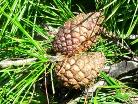
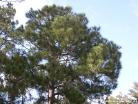
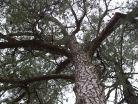
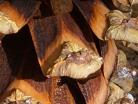
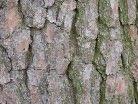
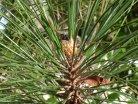
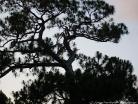

Want to add your tree to our picture gallery? Click here for details!
Tree lists:
•A-Z by scientific
name
•A-Z by common
name
•By Family
For state A-Z list click state name below.
•A-Z by scientific
name
•A-Z by common
name
•By Family
For state A-Z list click state name below.
-Color denotes a tree that is rare or endangered



Botanical
A native conifer, Pinus resinosa, averages between 75 and 80 feet but may grow to 200 feet in optimal sites. The largest trunk d.b.h (diameter at breast height) on record is 59.6 inches but the trunk base typically only reaches widths of 2 to 3 feet. Red pines have a single stem, or trunk, that supports a symmetrical, dense and oval crown that is supported by up curved branches. Twigs and branches are yellowish brown when young but turn reddish orange-brown. Red pine produces a new whorl of branches each year and grows in height at a rate of 10 inches per year for about 60 years. The bark is distinguished by the diamond, or criss-crossed, plate pattern created by fissures in the surface. It is a rich, warm, reddish-brown and has thin, scaly plates
A native conifer, Pinus resinosa, averages between 75 and 80 feet but may grow to 200 feet in optimal sites. The largest trunk d.b.h (diameter at breast height) on record is 59.6 inches but the trunk base typically only reaches widths of 2 to 3 feet. Red pines have a single stem, or trunk, that supports a symmetrical, dense and oval crown that is supported by up curved branches. Twigs and branches are yellowish brown when young but turn reddish orange-brown. Red pine produces a new whorl of branches each year and grows in height at a rate of 10 inches per year for about 60 years. The bark is distinguished by the diamond, or criss-crossed, plate pattern created by fissures in the surface. It is a rich, warm, reddish-brown and has thin, scaly plates
sloping or level plains, particularly those bordering lakes or swamps, are common areas for Red Pines. They have also been known to grow in dry, poorly drained sites, although growth is usually somewhat stunted. Elevation varies depending on the range area. Throughout much of it, Red pine is commonly found between elevations of 700 to 1,400 feet; however, in the New England area it may be found up to 2,000 feet, in New York at 3,480 feet, and in West Virginia at 4,000 feet. This native species is shade intolerant and requires a minimum of 6 hours of full sunlight a day for best growth and health. Annual rainfall needs are 20 to 40 inches and it has a low drought tolerance. Saplings are less drought tolerant than adults and care should be taken to ensure adequate watering needs are met. Cold hardy, Red pine can tolerate temperatures down to -43°F and only requires 80 frost free days. Saplings on the other hand are at risk of damage from spring frosts and should be covered when possible. This tree species is also tolerant of periodic flooding
and has low mortality rates when flooded for up to 28 days. This ability is even greater in saplings. Another interesting fact about Pinus resinosa, is that it makes scabs. When wounded by fire, this tree species starts producing a large amount of resin, which fills in and hardens in the wound. It is theorized that this creates a protective layer inhibiting damaging agents, like fungi and insect pests, from infiltrating and further harming the tree.
ENDANGERED in Connecticut, Illinois and New Jersey
